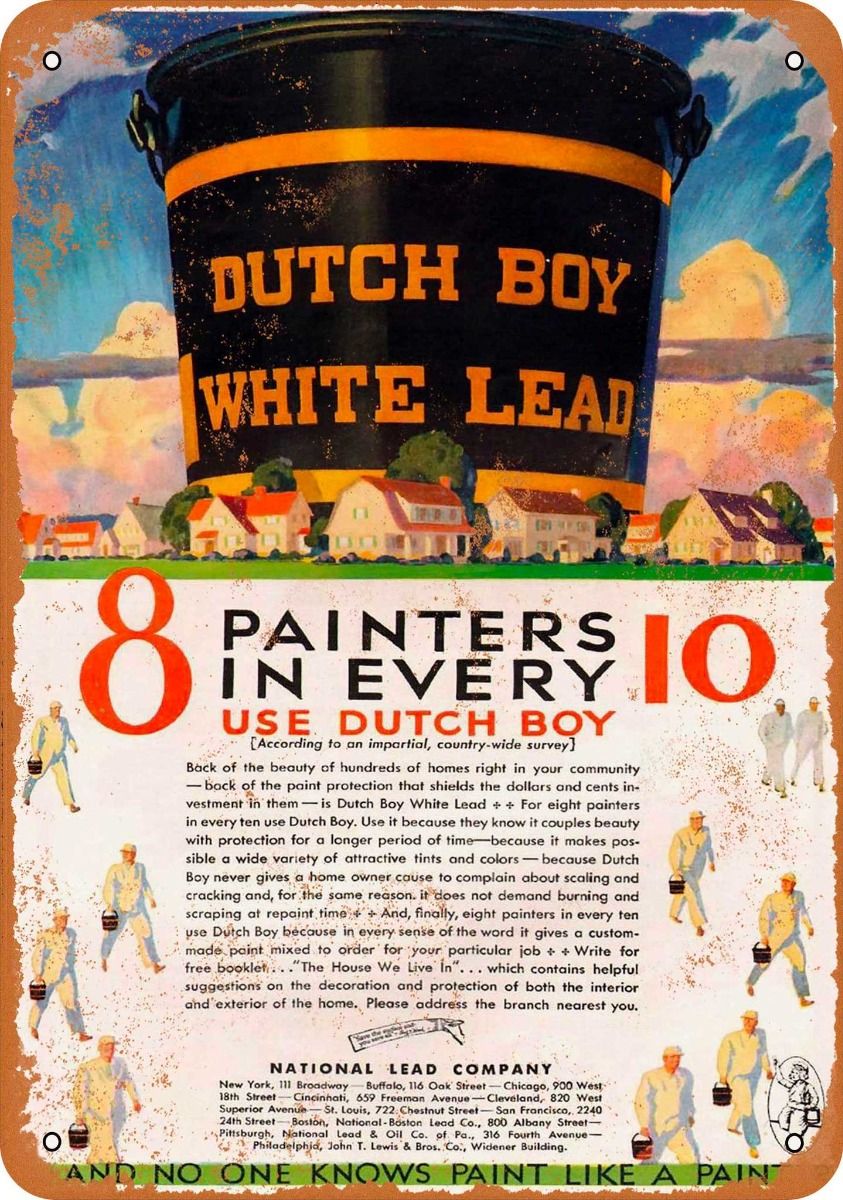
The recent shortage of lead white (flake white) oil paint by many artists’ material companies has created a panic among many artists. Understandably so because lead white is the most useful color on the artist’s palette for oil painting and many artists depend on a steady supply. Much wild speculation has become rampant about this situation, so we want to help dispel the growing number of myths surrounding lead white. Here is the situation regarding lead white oil paint.

The Shortage
Lead white oil paint is made by grinding basic lead carbonate (the chemical name for lead white pigment) in oil. Since the early 1970s, when this white pigment was prohibited for consumer paint (artists’ paints were exempted from this ban), many pigment manufacturers stopped producing it. At the same time, a few companies significantly reduced their output. About one year ago, the last European manufacturer stopped producing the pigment. The remaining manufacturer in North America still produces basic lead carbonate but only intermittently and at a much higher cost—more than doubling within the last four years.
This current situation caught many artists’ materials manufacturers by surprise and sent them scrambling to find new sources of lead white, some even looking in China and India for lead carbonate manufacturers.
Locating lead white is not a simple task because many trading companies in China and India offer normal lead carbonate (PbCO3) or other lead carbonate compounds, mistakenly identifying these compounds as basic lead carbonate (2PbCO3·Pb(OH)2). The other varieties of lead carbonate have not been reported in paintings except as impurities. (Gettens, 1967) Basic lead carbonate contains 25 to 30% lead hydroxide. It is this element that gives added opacity to lead white. (Wall, 1922) It also gives it the qualities of oil paint often sought by artists. To make matters worse, these compounds are not easily distinguishable from basic lead carbonate except by laboratory analysis, so it would be easy for a manufacturer to use the wrong lead carbonate compound.
Fortunately, Natural Pigments had the foresight to purchase a large amount of lead white pigment. It also began producing its lead white, anticipating that this pigment may no longer be available shortly.
Natural Pigments is the only artists’ material manufacturer to produce lead white pigment, using the “stack process” (or “Old Dutch method”) and Krems process (erroneously called “Cremnitz white”). These processes differ from methods used to manufacture basic lead carbonate today, based on an electrolytic process. The results of the Dutch and Krems methods are basic lead carbonate, but the size and shape of the pigment particles are quite different, giving these whites different properties in paint.
Flake White and Cremnitz White
When you see a tube of oil paint labeled “flake white” or “Cremnitz white,” what pigment does it contain? Most artists’ material manufacturers name a mixture of basic lead carbonate and zinc oxide ground in linseed oil “flake white.” “Cremnitz white” from these companies, on the other hand, is basic lead carbonate ground in linseed oil.
The term “flake white” comes from the scales or flakes of basic lead carbonate that appear on corroded lead in the stack process or the old Dutch method. The modern electrolytic process does not result in flakes of basic lead carbonate; instead, the pigment occurs as a fine sediment at the bottom of the process tank.
The name “Cremnitz white” is derived from a small town in lower Austria, Krems, now called “Krems an der Donau” (the name was mistakenly associated with the city of Kremnitz in Hungary). It was deemed superior to any other lead white during the nineteenth century and perhaps is why artists’ materials manufacturers chose this name to designate their finest lead white in oil paint.
Rublev Colours Lead White
Rublev Colours Lead White is basic lead carbonate ground in linseed oil without additives (different from fillers or extender pigments), which all other manufacturers use in their oil colors. Hence, Rublev Colours Lead White is similar to Cremnitz white from other companies, with the significant exception that Rublev Colours Lead White does not contain any additives. Additives are used in modern oil paint to help prevent the pigment and oil from separating during storage and aid in grinding the paint. Because Rublev Colours Lead White is made with basic lead carbonate made according to modern practice, we chose to name it “lead white,” so as not to confuse artists with lead whites that we will be introducing made using the stack process lead white and Krems white lead to be named “Flake White” and “Krems White,” respectively.
Additives used by all other manufacturers include beeswax, hydrogenated castor wax, aluminum, magnesium, and zinc stearate. These ingredients amount from one to five percent of the total weight of the formula. Although this is a comparatively small amount, additives change the behavior of the pigment in oil because they increase the oil’s viscosity, giving the paint a buttery, short consistency.
Rublev Colours Artists Oils are traditional oil paints because they are made according to historical methods, such as those in the nineteenth century, when modern additives were not used in artists’ paint. Rublev Colours use traditional pigments, so you will not find pigments invented after the rise of modern industry, such as cadmium, phthalos, quinacridones, etc., in our colors.
References
(Gettens, 1967) Gettens, Rutherford J.; Kuhn, Hermann; Chase, W.T.; “Identification of the materials of paintings. 3, Lead white,” Studies in Conservation, Volume 12, 1967, p. 125.
(Wall, 1922) Wall, William E., “The Necessity of White Lead in the Painting Business,” National Painters Magazine, Volume 49, Schnell Pub. Co., 1922, p. 46.












